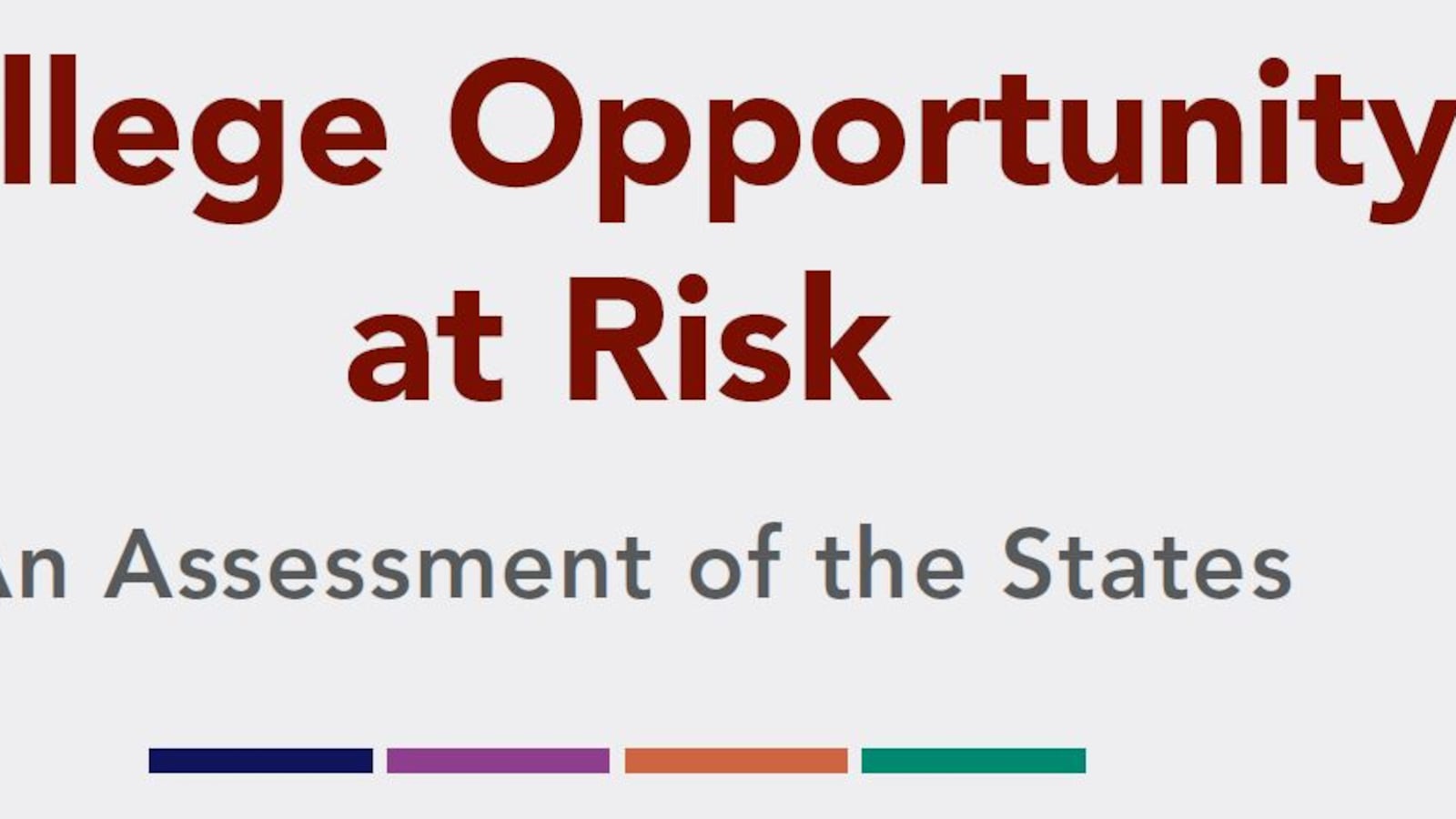This article was originally published in The Notebook. In August 2020, The Notebook became Chalkbeat Philadelphia.
Among the 50 states, Pennsylvania ranks 48th on the affordability of higher education, with students and their families spending 40 percent of income on educational expenses even after financial aid.
This finding comes from the recent College Opportunity Risk Assessment compiled by the University of Pennsylvania’s Graduate School of Education. The report assesses the various risk factors affecting higher education accessibility and attainment for each state. It also ranks the states by their relative risk levels, from lowest to highest, using indicators for both broad and specific risk areas.
Peter Granville, a research assistant for this project and the program coordinator for academic resources at Haverford College, said that the report takes a long-term perspective on current challenges.
“Focusing on risk to college opportunity is really about focusing on the future,” he said. “While so much education policy is focused on solving very immediate problems and meeting goals for the next couple of years, we wanted to pinpoint some symptoms of more long-term, structural issues.”
Washington, Vermont, and Virginia were ranked as the top three states, having the lowest overall risk – meaning that overall opportunity is high. Alabama, Montana, and Mississippi were found to have the highest overall risk and lowest opportunity rating.
Pennsylvania faces a moderate level of overall risk, but some indicators are especially concerning: Among public higher education institutions, state investment per degree produced is one of the lowest in the country. This means that students and their families bear the brunt of higher education expenses because they need to pay for the portion not subsidized by the state.
“Part of this [phenomenon] is because Pennsylvania has so many private institutions, for which the state does not have that same obligation [as that for public institutions] to support the students through the receipt of their degree,” Granville said. “But right now, families are [bearing] an almost impossible burden.”
The problem of affordability may worsen in the upcoming school year for students attending state or state-related universities. Pennsylvania’s 14 state universities plan to increase tuition by 3 percent, though some other universities, such as the University of Pittsburgh and Pennsylvania State University, have imposed tuition freezes for in-state students.
Increasing state expenditure on higher education, however, may be difficult. From the report, Pennsylvania is one of the states whose economic and financial health faces the greatest risk. Its accumulated current and unpaid debt amounts to 250 percent of annual state revenue, leaving almost no excess state reserves for emergency expenses.
The substantial cost of higher education could explain why relatively few young people and working-age adults participate in post-secondary programs, even if nearly nine in 10 students successfully graduate from high school. Beyond high school, 40 percent of adults aged 18-24 and only 3 percent of those aged 25-64 are pursuing additional degrees and certifications.
“If a family has to pay 40 percent of their income after financial aid to attend college, whether that’s the child or one of the parents enrolling, it puts an incredible burden on that family to carry,” Granville said. “There are so many incentives for adults to not enroll in programs beyond high school. That just means they have less opportunity for upward mobility or to get the jobs they want and progress through their careers.”
Besides affordability, inequitable high school and college graduation rates pose another challenge to college opportunity in Pennsylvania. White students are 12 percent more likely to graduate from high schools and 15 percent more likely to graduate from post-secondary degree programs than students from other racial and ethnic backgrounds. This puts Pennsylvania within the bottom 10 states on high school and post-secondary completion equity.
In contrast, neighboring New Jersey has a 9 percent difference in graduation rates between white students and those from other racial and ethnic backgrounds.
Earlier this year, Gov. Wolf reaffirmed his commitment toward “ensuring that all students have access to an equitable, high-quality, well-rounded education” when he launched the state plan for complying with the Every Student Succeeds Act (ESSA), the main federal law governing K-12 education.
The ESSA plan aims to increase educational equity and students’ opportunity to succeed through different initiatives, such as expanding computer science instruction across schools and grade levels.
To further support adults’ professional development, Wolf’s administration established PAsmart, which funds job training, STEM classes, and apprenticeship programs. PAsmart’s website provides resources about educational and career advancement, from information on financial aid to a short questionnaire that identifies one’s suitable careers.
The governor also included an increase of $42.5 million for higher education funding in his 2018-19 budget, with $15 million going to the 14 state universities.
Granville sees the increased funding as a positive step.
“Over the past several decades in Pennsylvania and the nation as a whole, there has been a decline in investment into state systems of higher education. You see that greater burden on families to pay for tuition and the costs of running an institution. So any movements that go against that trend are likely going to effect a positive change. If well-managed, those funds could help to take the burden off from families,” he said.
Granville also hopes that the College Opportunity Risk Assessment will serve as a reference for policymakers.
“We certainly don’t claim that this report is the be-all and end-all explanation for the state,” he said. “It’s a starting point and it depends on the state to add nuance, to add greater detail and understanding to the report.”

